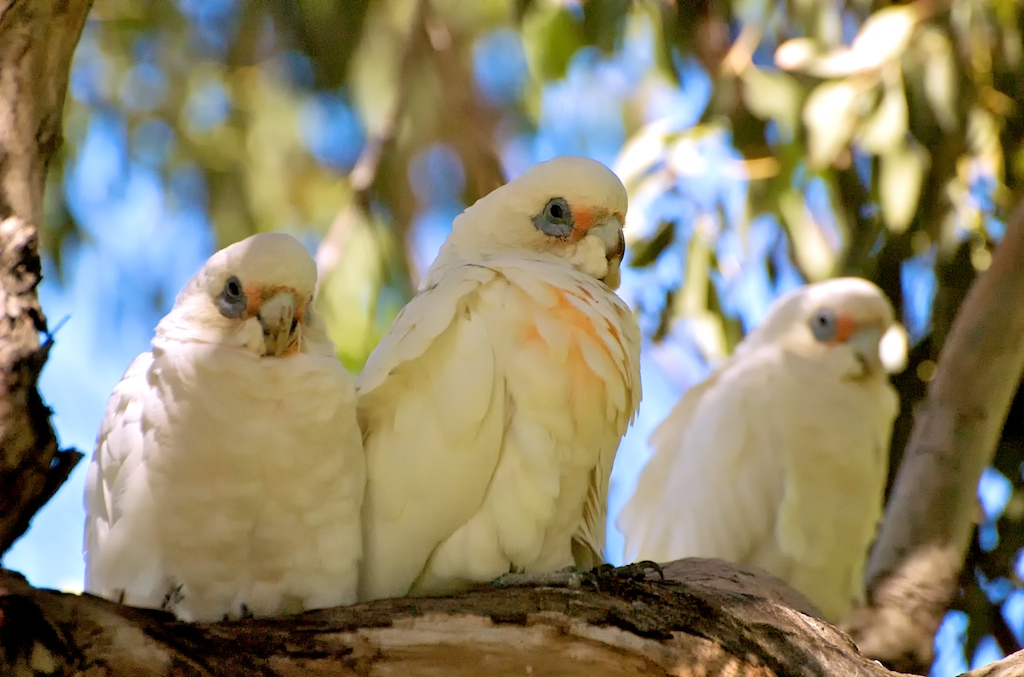This very striking bird is known for its tendency to gather in sizeable and noisy flocks, sometimes comprising several thousand individuals, especially around water sources!
Meet little Corella:
“Little Corella- Circus” by birdaspoetry is licensed under CC BY 2.0. (cut)
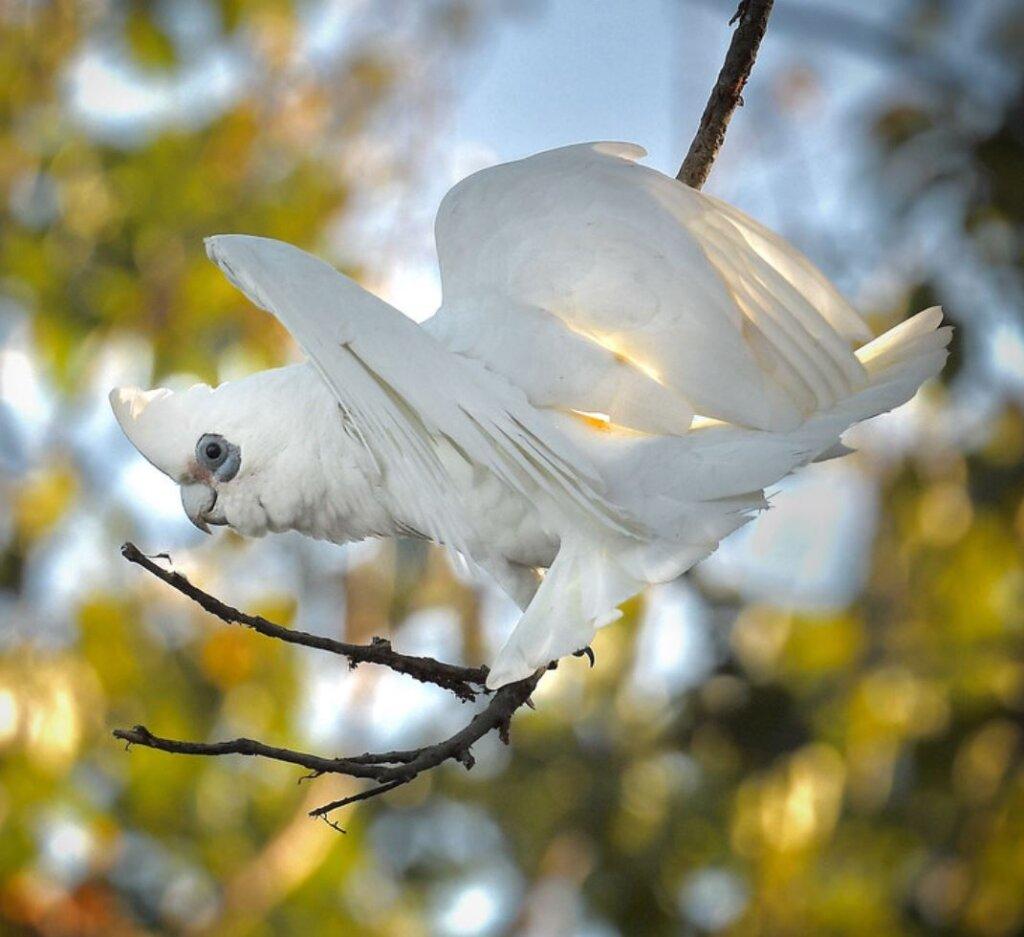
Description
The little Corella (Cacatua sanguinea) is a small white cockatoo, measuring 35–41 cm (14–16 in) long and weighing 370–630 g (13–22 ounces), with an average weight of 525 g ( 1,157 pounds). . It shares similarities in appearance with the Long-billed Corella and Western Corella, but is smaller. Unlike those species, it has upper and lower jaws of similar length. In particular, it lacks the orange throat bar found on the long-billed Corella.
“Little corellas” by CazzJj is marked with Public Domain Mark 1.0.
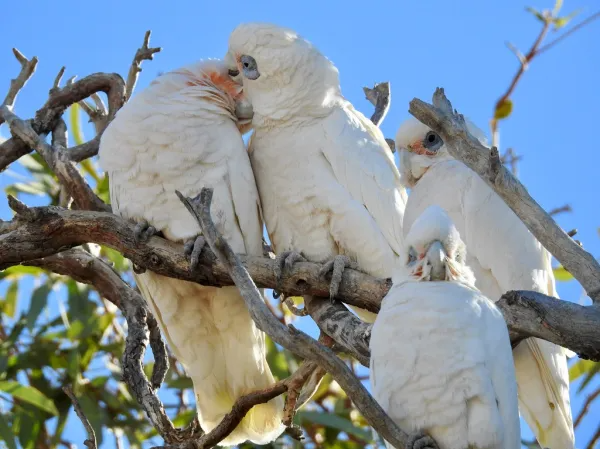
Females are slightly smaller than males in various measurements.
The Little Corella, also known as the Short-billed Corella, Naked-eyed Cockatoo, Bloodspotted Cockatoo, and Little Cockatoo, is a white cockatoo native to Australia and southern New Guinea.
“Little Corella” by blachswan is licensed under CC BY 2.0.

Among the Yindjibarndi people of the central and western Pilbara, it was known as “Birdirra”. Traditionally, they kept these birds as pets and used their soft feathers in traditional ceremonies and dances to decorate their heads and bracelets.
“Little Corella” by Mark Gillow is licensed under CC BY 2.0.
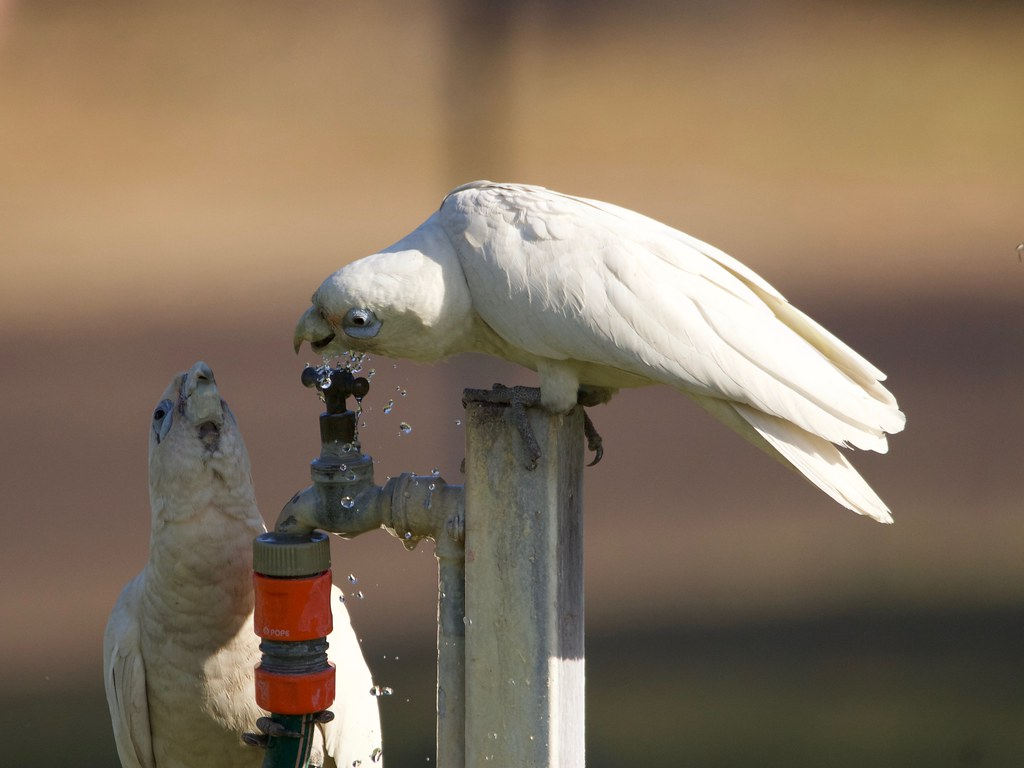
Distribution and habitat
They inhabit a variety of environments, from arid deserts in central Australia to eastern coastal plains. They are also present in urban areas such as Melbourne, Canberra, Sydney and Brisbane, where they feed on grass and playing fields. In some regions, they are considered crop pests and can damage trees by chewing the bark of smaller twigs.
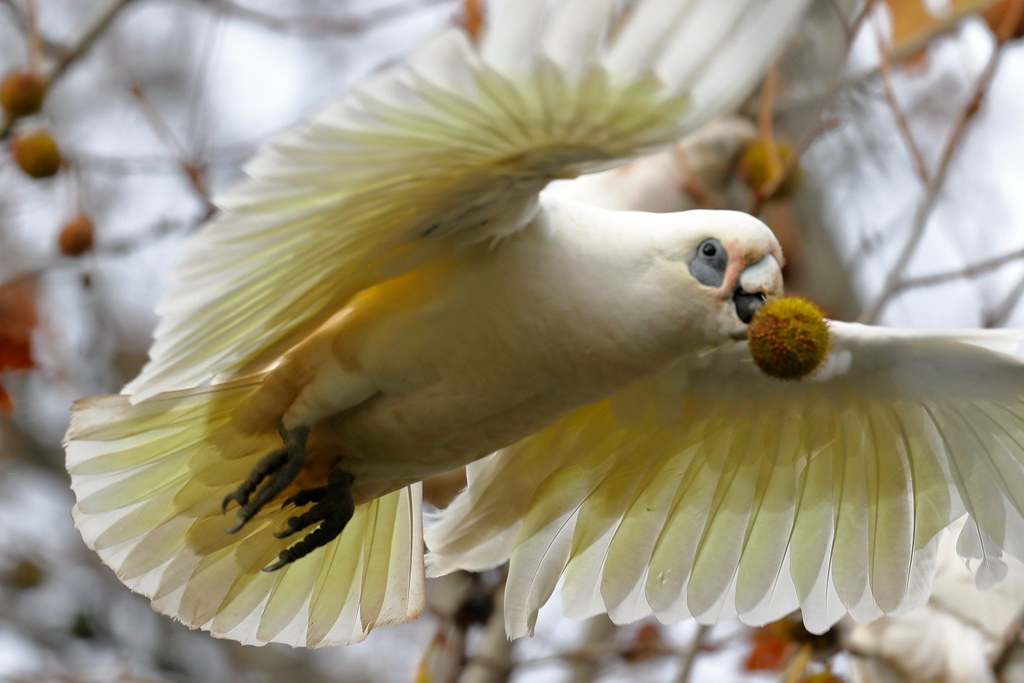
Feeding
Small Corellas feed primarily on the ground, occasionally foraging in trees and bushes. They consume a variety of wild and cultivated seeds, including grasses in urban areas. They can also be agricultural pests and often feed on cereal crops such as wheat, barley and corn.
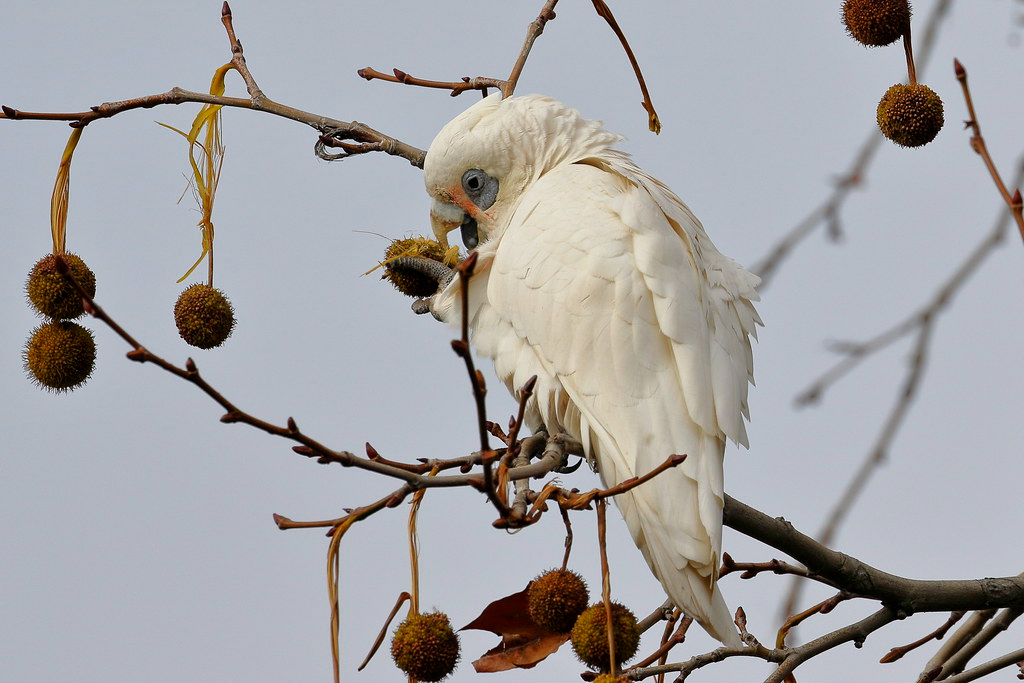
Breeding
Breeding occurs from May to October, and nests are usually located in tree holes, cliff cavities, or termite mounds.
“File:(1)Little corella-998.jpg” by Sardaka is licensed under CC BY-SA 4.0.
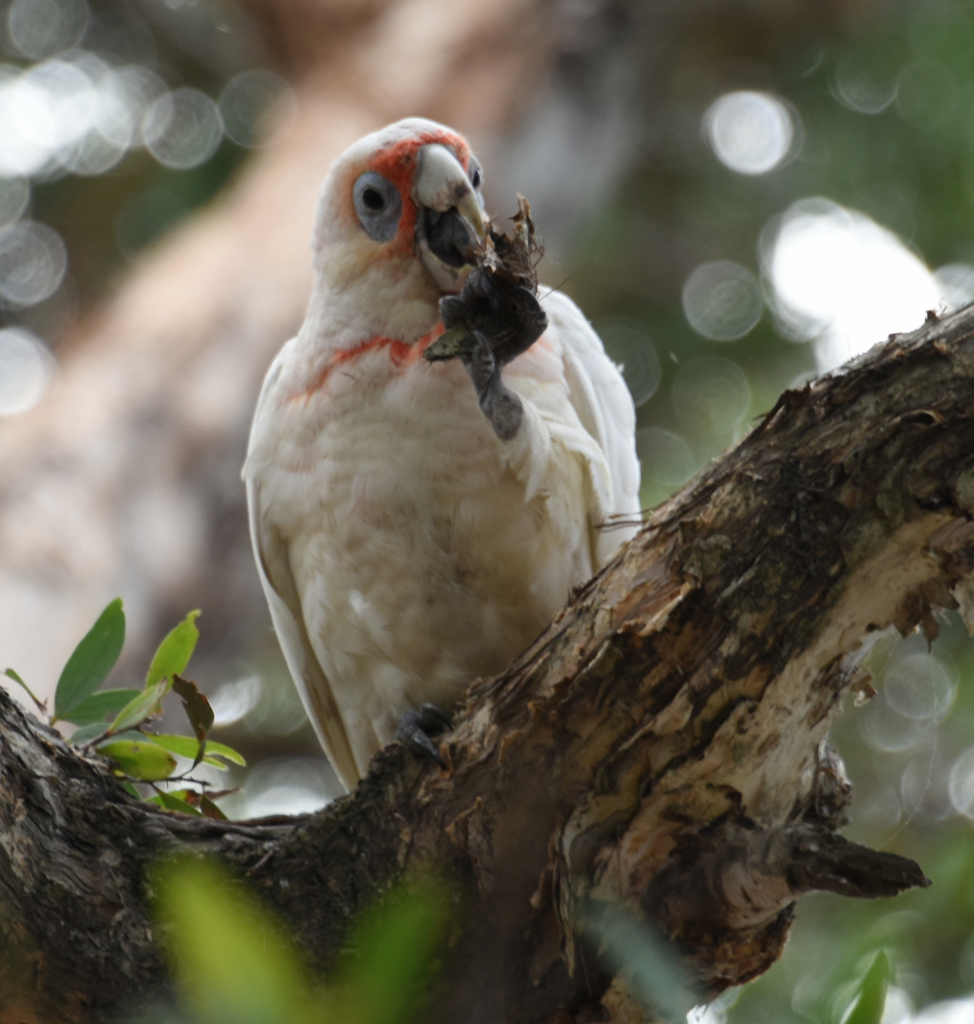
Behavior
Small Corellas form flocks of up to several thousand individuals, and often mix with other bird species such as galahs, sulfur-crested cockatoos and red-tailed black cockatoos. They roost in trees at night and fly out to feed early in the morning and return in the late afternoon. These flocks can cover significant distances between feeding and roosting areas, and in desert regions, they must fly to watering holes twice a day.
“File:(1)Little corellas Centennial Park 267.jpg” by Sardaka is licensed under CC BY-SA 4.0.

Call
Their calls consist of high-pitched notes and screeches, somewhat similar to those of the sulfur-crested cockatoo. Large flocks can produce a deafening screech audible from several kilometers away.
“Little corella” by Stephen Edmonds is licensed under CC BY-SA 2.0.
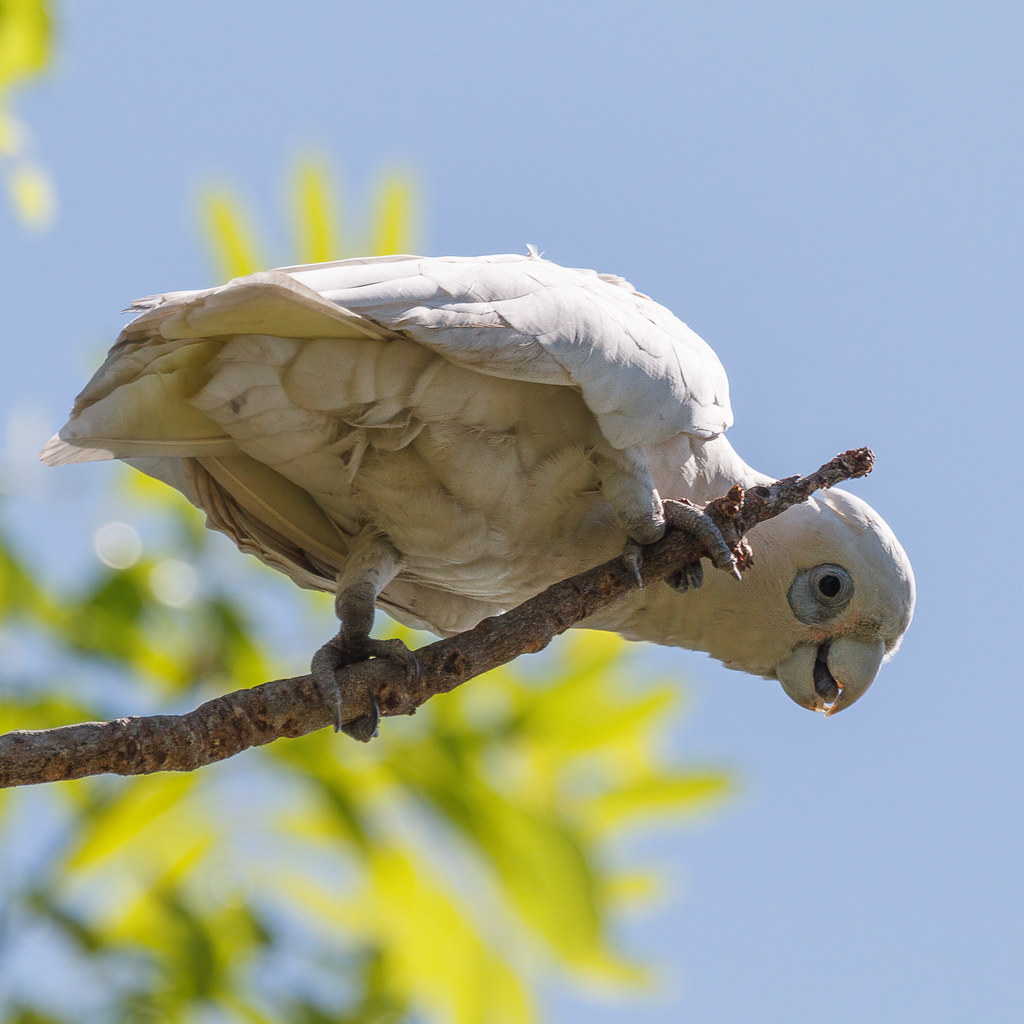
Relationship with humans and threats
In South Australia, small Corellas are classified as “unprotected native wildlife” and landowners can shoot, trap or gas them without a permit. Permits are available to take a limited number of wild Little Corellas each year for poultry purposes.
“Little Corellas” by Miss Dilettante is licensed under CC BY-SA 2.0.
